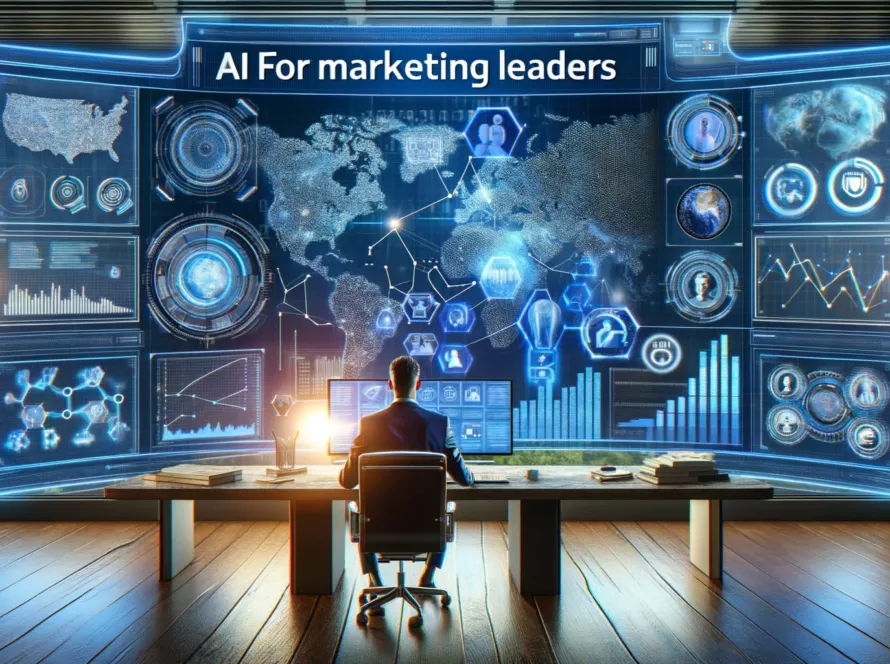Artificial Intelligence (AI) has emerged as a game-changer in the field of digital marketing. With its ability to automate processes, analyze vast amounts of data, and make intelligent decisions, AI is transforming the way businesses approach advertising campaigns. In this comprehensive guide, we will explore how AI technologies such as machine learning and data analytics are reshaping advertising practices and revolutionizing digital ad campaigns.
Understanding the Role of Machine Learning in Advertising
Machine learning is a subset of AI that enables algorithms to learn from data patterns and improve decision-making without human intervention. In the context of advertising optimization, machine learning algorithms play a crucial role in analyzing historical performance data to identify trends and optimize various elements of ad campaigns.
By leveraging machine learning, advertisers can refine their targeting parameters, bidding strategies, ad creatives, and placement options over time. This continuous learning process allows for enhanced targeting accuracy while maximizing the efficacy of advertising budgets. Machine learning algorithms can also adapt to changes in consumer behavior or market trends, ensuring that ad campaigns remain aligned with current preferences for maximum impact.
Exploring Programmatic Advertising and its AI-driven Approach
Programmatic advertising is an automated approach to buying and selling digital ad spaces. It utilizes AI-powered algorithms to assess user behavior, demographic information, and contextual cues in real-time. This enables advertisers to make instantaneous decisions regarding which ad impressions to purchase and at what cost.
The adoption of AI in programmatic advertising empowers marketers to connect with their intended audience more effectively while reducing unnecessary expenditure. By leveraging real-time bidding processes driven by AI algorithms, advertisers can strategically place ads where they are most likely to be seen by their target audience. This results in improved campaign outcomes through informed decision-making based on data-driven insights.
The Benefits of AI-driven Ad Campaigns
There are several advantages to implementing AI-driven ad campaigns. Firstly, AI enables advertisers to achieve heightened targeting precision by identifying high-value audiences tailored specifically to their brand’s offerings. By analyzing huge amounts of data quickly, AI algorithms can identify patterns and preferences that human marketers may overlook.
Secondly, AI-driven campaigns facilitate real-time optimization of campaign variables, resulting in increased engagement rates and conversion potential. By continuously monitoring and adjusting various elements such as ad creatives, targeting parameters, and bidding strategies, AI algorithms can ensure that ads are delivered to the right audience at the right time.
The Power of Ad Campaign Automation and Data-driven Insights
Efficiency and optimization are key to advertising success. Ad campaign automation, powered by AI technologies, is revolutionizing the way marketers manage their campaigns. By streamlining processes, reducing manual labor, and improving scalability, automation tools are freeing up valuable time for marketers to focus on strategic development.
Bidding Automation
One of the key benefits of ad campaign automation is the ability to handle routine tasks such as bid adjustments and budget allocation. These tasks can be time-consuming when done manually, especially when managing multiple ad campaigns across different platforms. With AI-powered automation tools, these processes can be streamlined and executed automatically based on predefined rules or algorithms.
For example, instead of manually adjusting bids for each keyword or placement in a campaign, AI algorithms can analyze historical performance data and make real-time bid adjustments based on factors such as conversion rates or cost per acquisition (CPA) goals. This not only saves time but also ensures that bids are optimized to achieve the desired campaign objectives.
Ad Performance Tracking With AI
Automation also plays a crucial role in performance tracking and reporting. With AI-powered tools, marketers can easily monitor key metrics such as impressions, clicks, conversions, and return on ad spend (ROAS) in real-time. These tools provide comprehensive dashboards that display performance data in a visually appealing format, making it easier for marketers to track campaign progress and identify areas for improvement.
Advertising Scalability With AI
But ad campaign automation doesn’t stop at efficiency gains—it also enhances scalability. With AI-driven tools handling routine tasks, marketers can manage larger and more complex ad campaigns without the need for additional resources. This allows businesses to scale their advertising efforts and reach a wider audience without compromising on campaign performance.
AI Ad Optimization
Furthermore, automation enables real-time optimizations based on data-driven insights. AI algorithms can analyze data quickly and make informed decisions regarding ad placements, targeting parameters, and bidding strategies. This ensures that campaigns are continuously optimized for maximum impact and ROI.
For example, AI algorithms can analyze user behavior data in real-time to identify high-value audiences or segments that are most likely to convert. Based on these insights, advertisers can adjust their targeting parameters or bidding strategies to focus on these high-value segments, resulting in improved campaign performance.
But how do marketers derive these valuable data-driven insights? The answer lies in harnessing the power of data analytics and AI technologies. By combining the two, marketers can collect, analyze, and interpret tonsof data to identify patterns or anomalies that inform their advertising strategies.
Data analytics allows businesses to make sense of the massive amount of data generated by digital advertising campaigns. By analyzing this data, marketers can gain valuable insights into consumer behavior, preferences, and trends. This information can then be used to optimize ad campaigns in real-time—ensuring that advertising efforts remain aligned with current market conditions.
AI-Powered Algorithms
AI-powered algorithms play a crucial role in extracting meaningful insights from data. These algorithms can analyze large datasets quickly and identify patterns or correlations that may not be apparent to human marketers. By leveraging machine learning techniques, AI algorithms can continuously learn from new data and improve their predictive capabilities over time.
Data-driven insights also enable real-time optimizations of ad campaigns. By continuously monitoring campaign performance metrics such as click-through rates (CTR), conversion rates (CVR), or return on ad spend (ROAS), marketers can make informed decisions regarding ad creatives, targeting parameters, or bidding strategies.
For example, if an ad creative is underperforming in terms of CTR or CVR compared to other variations, marketers can quickly identify this through data analysis and make adjustments accordingly. They can test different variations of the creative or adjust targeting parameters to improve performance.
AI Ad Campaigns In a Nutshell
Ad campaign automation powered by AI technologies is revolutionizing digital advertising by improving efficiency, scalability, and campaign performance. By automating routine tasks such as bid adjustments and budget allocation, marketers can save time and focus on strategic development. Real-time optimizations based on data-driven insights enable advertisers to continuously improve targeting precision and maximize ROI. With the adoption of AI-driven automation tools and harnessing data-driven insights through analytics, businesses can optimize their digital ad campaigns for better results while reducing manual labor and improving overall efficiency. Stay ahead in today’s competitive advertising landscape by embracing the power of automation and data-driven decision-making processes.



